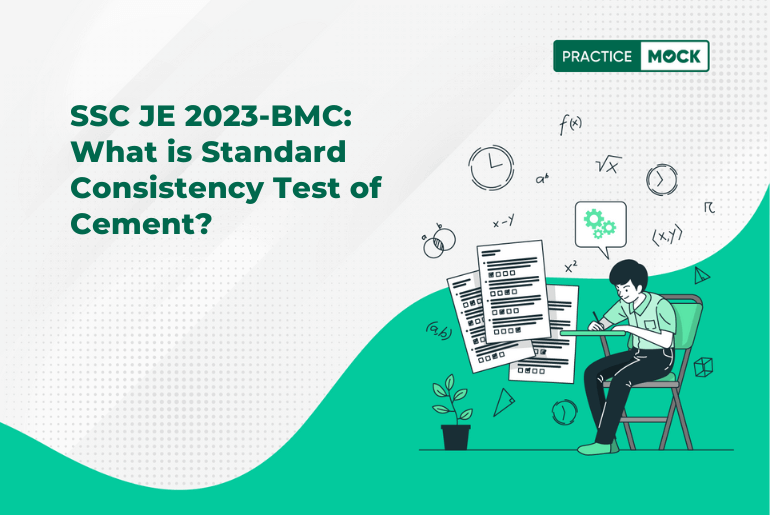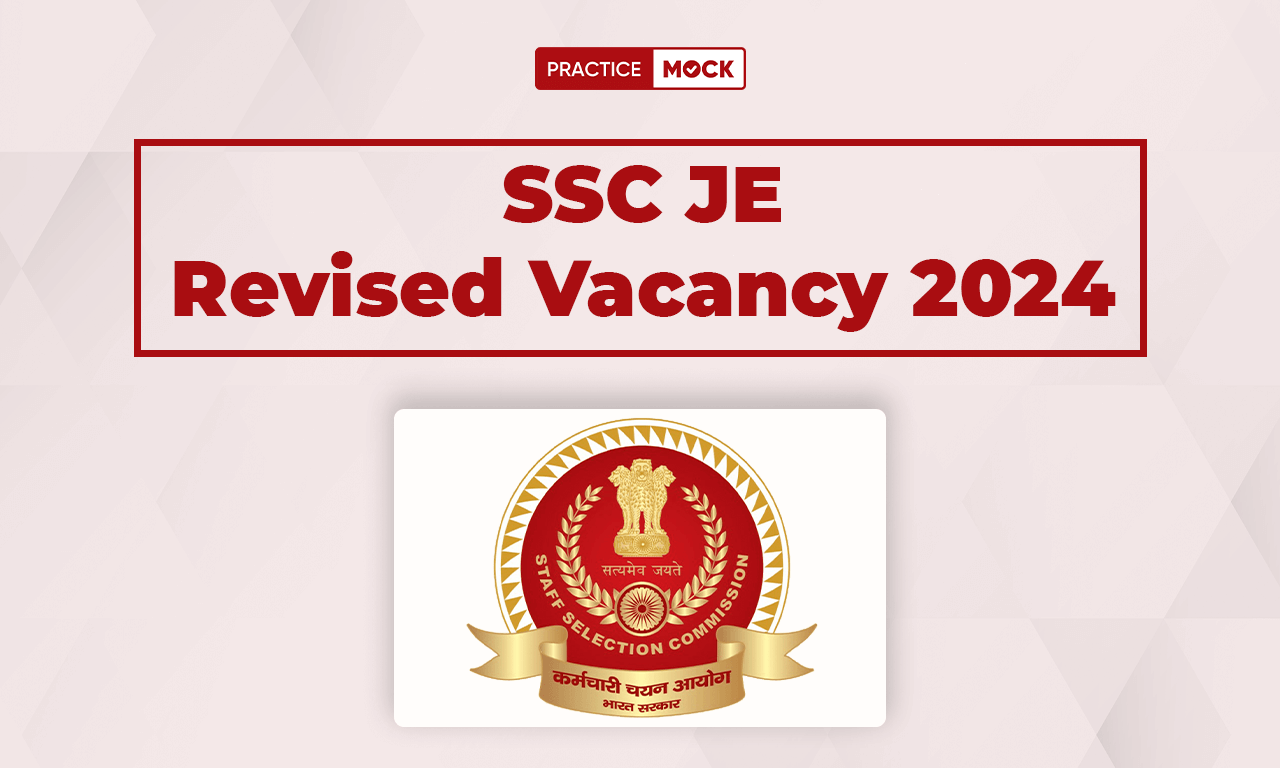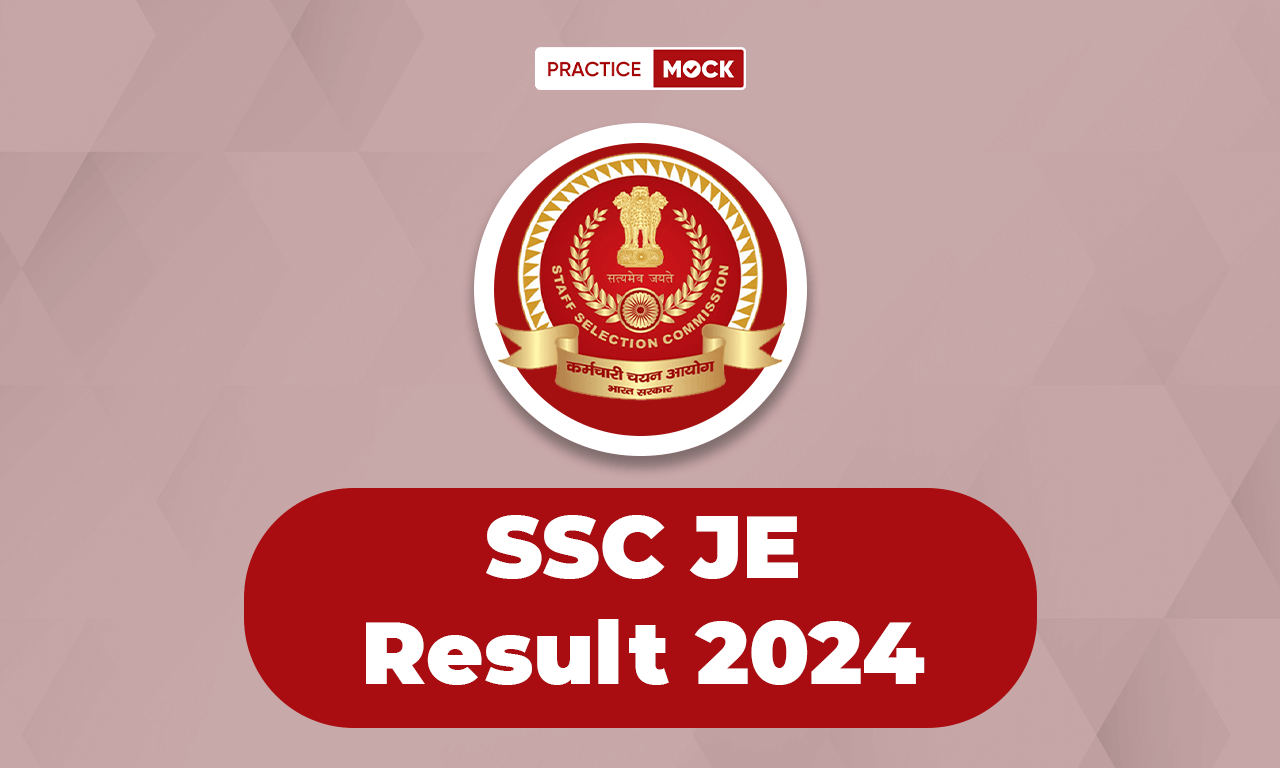

What is the Standard Consistency Test of Cement? How does it work? Do you know? If yes, how much do you know about it? In this article, we will talk about the Standard Consistency Test of Cement. You will acquire the skills to answer any question pertaining to it with finesse and accuracy. And do not miss the opportunity to take a Free Mock Test to assess your knowledge and abilities on this topic.
What is Standard Consistency Test of Cement?


The standard consistency of cement refers to the specific consistency at which the Vicat plunger can penetrate to a point 5 to 7mm from the bottom of the Vicat mould (or 33 to 35 mm from top of the mould) during testing.
Determining the Standard Consistency of Cement:
Equipment for Standard Consistency Test:
1. Vicat Apparatus: The vicat apparatus comprises a frame with a movable rod having interchangeable attachments at both ends, including:
• Plunger for determining the standard consistency (made of polished brass, 10 ± 0.05mm in diameter, with a flat lower end and a projection for insertion into the movable rod).
• Needle for determining the initial setting time (with a flat end and a cross-sectional area of 1mm²)
• Needle for determining the final setting time (circular with a cross-sectional area of 1mm² and fitted with a metal collar of dia 5 mm)
2. Movable Rod: The movable rod carries an indicator that moves along a graduated scale attached to the frame. Some models may have an additional dash pot attachment, which allows for a slow lowering of the movable rod.
3. Graduated Scale: The graduated scale is 40mm long, with the smallest division being 1mm.
4. Vicat Mould:
• Single Mould: A frustum of a cone-shaped mould with an internal diameter of 60 +/- 0.5mm at the top, 70 +/- 0.5mm at the bottom, and a height of 40 +/- 0.5mm.
• Split Type Vicat Mould: An alternative to the single mould, consisting of a split ring with an internal diameter of 80 +/- 0.1mm and a height of 40 +/- 0.5mm. It comes with a non-porous base plate and a suitable clamping ring.
Procedure for Determining Standard Consistency of Cement:
1. Place the Vicat apparatus on a level base. If using the apparatus with a dashpot, raise the movable rod to its highest position and secure it with a pin. Unscrew the top of the dashpot and fill it halfway with suitable oil of viscosity. Screw the top back on and work the plunger several times.
2. Attach the plunger for determining standard consistency to the movable rod and work it a few times.
3. Take 400 gm of cement in a pan and a pre-weighed quantity of water in a beaker.
4. Create a paste by adding the water to the cement. Start a stopwatch at the moment of water addition.
5. Place the Vicat mould on a non-porous plate and fill it with the cement paste.
6. After filling the mould completely, gently shake it to remove any air voids. Then, smoothen the surface of the paste to make it level with the top of the mould. This prepared cement paste becomes the test block.
7. Position the test block under the movable rod, where the plunger is located.
8. Lower the plunger gently to touch the surface of the cement paste and quickly release it. (If using the Vicat apparatus with a dashpot, place the mould filled with cement paste and the non-absorbent plate on the base plate of the Vicat apparatus. Raise the plunger of the dashpot and bring it in contact with the top cap of the movable bearing rod. Remove the pin holding the movable bearing rod to the surface of the cement paste and quickly release by pushing down the plunger to sink into the paste). This step should be done immediately after filling the mould.
9. Prepare trial test specimens with varying percentages of water until the plunger penetrates to a point 5 to 7mm from the bottom of the Vicat mould, which is then read on the scale.
10. Express the amount of water required as a percentage by weight of the dry cement.
SSC JE 2023 Mock Test for Ultimate Practice
FREE SSC JE Civil Engineering 2023 Mock Test: Are You Ready for the Challenge? Find Out Now!
Recent Posts
Success Story of Himanshi Cleared IBPS PO and Clerk
PracticeMock's mocks quality is simply amazing says Himanshi who has cleared IBPS Clerk & PO.…
RRB NTPC 2025 Exam Date, Check CBT Exam Schedule
In this blog, we have provided all the details related to the RRB NTPC 2025…
IBPS RRB Clerk Exam Pattern 2025, Check Prelims & Mains Section Wise Detailed Pattern
In this blog, we are providing IBPS RRB Clerk Exam Pattern 2025 with detailed sectional…
200 + English Questions for CBI Credit Officer 2025 Exam
In this blog we have discussed 200+ English questions for CBI Credit Officer along with…
RBI Grade B Exam Pattern 2025, Check Phase 1 & 2 Topics
RBI Grade B Exam Pattern 2025 covers Phase 1 and 2 paper patterns. Candidates can…
SBI Clerk 2025 Notification, Mains Exam on 10th & 12th April
The SBI Clerk Mains 2025 Exam Date has been released along with the mains admit…


